Shanghai Disneyland Trip Planning Guide
Shanghai Disneyland is Disney’s newest park, located in China. This travel planning guide covers all facets of a visit to Shanghai Disney Resort, from general: airfare, transportation, currency, etc. to Disney-specifics: food in the parks, where to stay, FastPass strategy, and more.
Let’s start with a threshold question: should you visit? We enjoyed Shanghai Disneyland much more than we expected, and found this to be a fairly common reaction among others we encountered who went for opening day. No, it’s not the best Disney park in the world–or even Asia–but it’s arguably the best opening day park with the most well-rounded attraction attraction roster Disney has built since EuroDisney.
Moreover, Shanghai Disneyland has a lot of potential as it grows. Since it is already proving very popular with guests, we assume that growth will happen sooner rather than later. We’ll have to update our theme park rankings, but we’d put Shanghai Disneyland about middle of the pack. In other words, we do recommend visiting, but it shouldn’t be your top priority for the international parks, nor should it be your first international park.
If you are traveling to China, we recommend this post as a Shanghai Disneyland-specific supplement to other general resources. For general travel advice to China, we reviewed several books at our local library before booking the trip, but ended up buying only Lonely Planet Shanghai because that’s the only city we planned on visiting.
If you’re planning on visiting other spots in China, that one guide will not suffice. Honestly, none of the generalized “China” guides seemed all that good–we’d probably get one of those, but supplement it with another city guide (probably Lonely Planet Beijing).
Now let’s dig into the meat of this Shanghai Disney Resort Trip Planning Guide!
Cultural Etiquette ‘n’ Stuff
If you Google “Shanghai Disneyland etiquette” you will find numerous results painting an unflattering picture of the resort and its guests. Trash all over the central plaza, reports of line-cutting, uncouth behavior, and general anarchy is the scene being presented by the media.
Our experience with Shanghai Disneyland did not align with these media reports whatsoever. Yes, there was trash in the central plaza after guests had been sitting around for 2 hours waiting for the fireworks, but it was cleaned up within 10 minutes after the show. You’ll find the same ‘scene’ at literally every other Disney castle park on the planet post-fireworks. Nowhere in the park was this messy at any other time. In general, we did not witness behavior that is in any way worse than what can be observed of Americans at any day of the year at Walt Disney World.
To be sure, you will possibly witness things you would not see in U.S. parks. The one thing that is potentially very disconcerting for westerners is public defecation. This is a hot-button issue even within China (and particularly controversial between Hong Kongers and the Mainland Chinese), and at least in part is rooted in the divide between urban and agrarian life in China, and the rapid pace of technological advancement in the cities. I’m hardly an expert on the cultural underpinnings of this all, so I’ll leave it at that.
My advice would be to not let it get to you. Just as you probably shouldn’t let it get to you when an adult has a meltdown and throws a temper tantrum at Walt Disney World. Neither are things society necessarily condones, but westerners seem far more fauxtraged by the former.
Personally, I’m not a huge fan of either, but both strike me as “ignore it and move along” scenarios. Hardly significant in the grand scheme of a visit. Particularly when the cleanliness level of the park is exceptionally high. And the cleanliness level of Shanghai Disneyland is exceptionally high.
Other things to expect are less personal space than you might be accustomed to in the U.S. and line-cutting. I didn’t notice the former at all, but don’t be surprised if you do. That comes with the territory of living in any population-dense place (and we’ve experienced the same in Hong Kong and Tokyo).
As for line-cutting, we noticed this a grand total of one time. On that one occasion, someone in front of us stopped the cutters from proceeding further by putting their arms outstretched on the queue stanchions. We experience cutting a good deal in the U.S. as parties try to “join their groups” farther ahead, and my mental reaction is always (“how about they join you farther back?!”) but not wanting to be confrontational about it, we always just let them pass.
I would not let any of these supposed “etiquette” issues deter you from visiting China. From our perspective, they are total non-issues. It does not require some unduly expansive view of cultural relativism, either–just a basic understanding that different cultures have different norms and mores. Any culture (including ours) can be negatively stereotyped. Don’t feed into that.
Language Barrier
If you’ve already read our Tokyo Disney Resort Planning Guide or Hong Kong Disneyland Planning Guide, this will sound familiar. Personally, I see the language barrier as no barrier at all (in any of these destinations). All signs have English on them and there are English park maps.
Just as is the case in Japan and Hong Kong, English is not the first language of Cast Members at Shanghai Disneyland. It’s a second language, at best. With that said, the two things that really work in your favor are pantomime and that Cast Members offer exemplary Disney service in Shanghai Disneyland.
The most common interactions you’ll have with Cast Members are when ordering meals, and menus with photos at every register made this incredibly easy for us. We didn’t once have an issue. If you’re a veteran of Disney parks or are doing research now (by reading guides like this one!), there’s a good chance you aren’t going to need to interact with Cast Members a ton during your visit, as you won’t have as many random questions along the way.
Beyond that, the Cast Members at Shanghai Disneyland are exceptional, trying to go above and beyond (with service that is nearly Japanese-caliber). The only time we encountered any problems were when trying to retrieve stored luggage from Shanghai Disneyland Hotel, and then this was was resolved by one Cast Member finding another who spoke better English and could assist.
When it comes to attractions, many of the shows and rides are entirely in Mandarin. Save for the shows, I don’t think this really matters. Most Disney attractions (everywhere) lean heavily on visual storytelling to engage a variety of audiences (including young children who are still developing their language skills), and the same is true in Shanghai Disneyland.
Think about Peter Pan’s Flight, for example. Do you recall any of its dialogue? If so, was that dialogue actually crucial to your enjoyment and understanding of the ride, or was it more or less superfluous given that flying over London pretty much speaks for itself?
I would say that 75% of the time or more, enjoyment of an attraction in no way depends upon spoken word. This is true on TRON: Lightcycle Power Run, Soaring Over the Horizon, Roaring Rapids, Camp Discovery, Buzz Lightyear Planet Rescue, Explorer Canoes, Jet Packs, and literally every ride in Fantasyland.
You may not understand the exact words Jack Sparrow is saying while riding Pirates of the Caribbean: Battle for the Sunken Treasure, you can surmise exactly what’s going on based upon the ride’s visuals (hint: there’s a battle, and it’s for the treasure that has sunken).
Even in the dialogue-heavy Eye of the Storm stunt show, visuals were such a dominant element of the experience that we had a great time just watching the show unfold, without a complete understanding of the plot (which seemed more like “guidelines” anyway).
Visas v. Visa-Free Transit Rule
Most visitors to mainland China are going to need/want to apply for a travel visa prior to visiting China. The Chinese Embassy website details how to go about this. There are a number of services that will make the process painless for you if you’re uncomfortable submitting the paperwork yourself. Additionally, TDR Explorer has a full guide explaining this process, to which we will defer since we did not get visas.
Instead, we took advantage of the 144-hour visa exemption. This rule only applies if you’re making a stopover in China and are visiting a third country on your trip. For example, if your route is Los Angeles to Shanghai to Tokyo to Los Angeles, you are eligible for the exemption, so long as you stay in China for less than 144 hours. If you’re taking a roundtrip flight to Shanghai, you are not eligible.
The amount of time spent in that third country is immaterial, so even booking an itinerary with a 2-hour layover in Japan would work (so long as you don’t have a layover in the same country before arriving to Shanghai–your “bookended” countries around the China portion of the trip must be different).
One caveat about this is a seldom-used rule and many airport agents–particularly those in smaller cities–may not be aware of it. They should be able to enter your travel information in their Travel Information Manual Automatic (Timatic) system and be advised that you qualify for visa-free travel, but should is the operative word there.
If you are going to take advantage of the visa-free travel exemption, we would highly recommend printing out paper copies of all travel documents, including your hotel confirmation. You should also try to obtain a Timatic printout confirming that you’re eligible for visa-free transit. This is particularly true if you booked open-jaw flights or legs of the trip through multiple carriers.
This was how we booked our trip (LAX->PVG->HKG->NRT->LAX) and the United agent in Los Angeles at the ticketing counter needed to see our travel documents to enter our information into their Timatic system in order to print our boarding passes (we were unable to do online checkin as a result). We then encountered a second agent at the gate who had to again confirm our documents when they did a visa-check. It was painless for us, but LAX also flies numerous routes to China, so it’s probably not all that uncommon.
By contrast, our friend Mark flew out of Orlando, and despite showing them the necessary information, Air Canada agents ignored documentation concerning the 144-hour rule and flat out denied him a boarding pass, stating that there was “no such rule.” Sadly, the indubitable duo of Florida Man and Dudley Do-Right couldn’t crack this mystery even when handed the policy. (In fairness, words are hard.)
Mark ultimately got the issue straightened out by speaking with a United manager at the airport (it was a codeshare flight), but by that time it was too late and missed his flight. There are other anecdotes like this on the 144-Hour Master Thread on FlyerTalk–but even more success stories, so don’t get too scared. We mention this not to dissuade you from taking advantage of the 144-hour rule, but so you arrive at the airport with ample time to address any issues that might arise.
Once we landed at PVG, we took advantage of the visa-free line at Immigration. If you’re utilizing the exemption, make sure to look for this line, as there was literally no one in it when we arrived, as compared to a lengthy line for regular visa transit.
Transportation
When it comes to airfare, we always recommend using a combination of hacks and patience to save money on flights. We recommend that you start by checking out ITA Software using flexible travel dates to narrow times that might be cheapest. There are a myriad of parameters you can set, and in our experience, ITA is the best way to find the lowest prices on airfare for set dates of travel. (Note: you cannot book via ITA.)
ITA is what we recommend because it’s great with more complex itineraries that include stopovers, open-jaw flights, etc. We figure this will come in handy for those looking to do the “Disney Grand Circle Tour of the Pacific Rim” and knock out all of the Disney parks in Asia on a single trip.
We cover how to do this in our “How to Visit 3 Disney Destinations on 1 Airfare” post, and the airfare savings are considerable leveraging these airfare rules. It might seem complicated at first, but it is well worth reading that post and figuring it out. That post covers how to incorporate Shanghai Disneyland, Hong Kong Disneyland, and Tokyo Disney Resort into a single trip. As mentioned above, our itinerary included stops in Shanghai, Hong Kong, and Tokyo. The total cost of our itinerary was just over $1,000, and the only reason it was that expensive is because our dates were locked in around Shanghai’s Grand Opening. Had we been more flexible, we could’ve booked the trip for ~$700.
To find great airfare deals like this, you should use fare alerts on Airfarewatchdog.com. You can set some parameters for the alerts here and receive email updates when they deem prices to be low. If your home airport is not a major international hub, we’d recommend adding the nearest major airport to your alert list, as sometimes it can be cheaper to book a flight to that airport, and then book the rest of your itinerary.
Minus the 12+ hour flight, getting from the United States to Shanghai Disneyland is easy–easier than any other international park aside from Hong Kong Disneyland. Once you land in Shanghai (fly into PVG), you can take a taxi to the parks for under $20 US. (The park and airport are both on the outskirts of the city, conveniently near one another.) You’ll likely be met by a bunch of “airport reps” inside PVG trying to book you a charter car–ignore them and go outside to find a taxi. If you book one of the cars inside, you’re going to pay at least $50. (These guys can be very pushy and ignoring them is the best strategy, as once you engage at all, they won’t leave you alone.)
Alternatively, you can take the Shanghai Metro, Line 11 if you’re staying downtown and want to get to Shanghai Disney Resort. We started our trip on The Bund (downtown) and used the Metro to get to Shanghai Disney Resort, which took a little less than an hour with one transfer. Be mindful that the Metro does stop operating shortly after SDL closes.
If you’re trying to get downtown from the airport, taxis are also available, but the Maglev is the best option. This is exactly what the name sounds like–a magnetic levitation transport. It’s basically like the hoverboard from Back to the Future, but for an entire train full of people.
Asia mass transit (Shanghai included) is very clean, safe, and reliable. That’s a big part of the appeal for us as Americans–seeing space-age stuff like hovertrains and bullet trains. In terms of getting around in general, there are several useful apps are Explore Shanghai, SmartShanghai, and Baidu Maps.
Internet
If you’re traveling to China and intend upon using the internet, you’ll want to either rent a SIM card or a MiFi unit. Unlike Hong Kong where free public WiFi is available across the city, it’s not quite as widespread in Shanghai (and we could rarely get it to work–most times it required receiving a text message to activate; we finally gave up). We used 3GSolutions for MiFi rental and were satisfied with our experience. They also do SIM cards, which are cheaper, but we opted for MiFi since it’s easily shareable.
Our MiFi was delivered to our hotel (there’s free WiFi in PVG) downtown and handed to us at check-in. When we were done with the rental, we gave it to the front desk at Shanghai Disneyland Hotel in a package provided to us. I guess someone from 3GSolutions goes around and picks them up? All I know is that we weren’t charged for the device, so they must’ve received it somehow…
Additionally, mainland China has “The Great Firewall,” which blocks out a number of popular social media sites and portions of the internet that are important for connected Americans. As such, we highly recommend getting a VPN. After doing a bunch of research, we opted for ExpressVPN (that link will get you 30 free days, but it’s after you pay for 30 days, so those free days may be of little use to you).
Price-wise, it’s slightly more expensive than competitors, but our research indicated that it was more reliable and faster. We had absolutely zero issues with it, and would recommend it. (We didn’t try alternatives, so YMMV on those.) You might also consider Opera’s free VPN, which people have reported using with success in China. We opted against this since it would be ineffective for non-browser based internet uses.
Money
China’s currency is the Yuan (you can find a current conversion rate via Google). You might consider ordering some Yuan before your trip from your local bank, as it’s nice to have for the metro, taxis, etc. It is not necessary to order a significant amount, as the vast majority of businesses in Shanghai accept credit card.
We strongly recommend having a credit card with no foreign transaction fees for any international travel. Actually, having 2-3 cards is ideal, in case one is inexplicably denied (it seems to occur for us at a higher rate than normal when traveling) or flagged (even when we notify the bank of travel plans, this has occurred).
When using your credit card, always pay with the local currency (if given the option) to avoid a potential fee and for a more favorable conversion rate. Note that in Shanghai, there’s no contactless pay system that’s nearly as ubiquitous as the Octopus card is in Hong Kong.
How Many Days?
If you’re casual visitor to China and randomly stumbled upon this article, a single day is sufficient to see the highlights of Shanghai Disneyland as part of your China trip.
If you’re a serious Disney fan, we recommend two days. You will likely want to dig deeper in the park, and despite the (deceptively) limited attraction lineup, there’s quite a bit to do that is unique to Shanghai Disneyland. Additionally, many of the attractions have already proven to have long waits, and average wait-times for even less popular attractions tend to exceed 30 minutes.
Beyond that, you’ll want to try the many dining options, shop, see the shows at SDL, and just generally explore the park. All of this takes more time than you expect, making 2 days the perfect amount of time, in our opinion.
We spent 3 days in Shanghai Disneyland on our first visit, and we still left wanting more. Granted, we are probably not the best example, as I spent hours per day just taking photos and the summer humidity left us fatigued during the middle of the day. Still, we think there’s an ample amount to justify 2 days in the park.
If you are crunched for time, visiting multiple Disney parks in Asia, we recommend allocating 66% to 75% of your days at Tokyo Disney Resort. (If we had 6 days total for the parks and were doing just Shanghai and Tokyo, we’d do a 2-4 split. If doing Shanghai, Hong Kong, and Tokyo, we’d do a 1-1-4 split.)
Additionally, we recommend allocating around half of your time on the entire trip to non-Disney sights. Hong Kong, China, and Japan each have a lot to offer, and it’s really simple to navigate all of them thanks to wonderful public transportation. Because of this, we would not do Hong Kong Disneyland, Tokyo Disney Resort, and Shanghai Disneyland all on the same trip. Unless you have a month for the trip, you’re going to be bouncing around too much and miss too much. That’s just us, though.
When to Visit
With Shanghai Disneyland only having opened a few months ago, it’s impossible to write a definitive “when to visit” section about the park at present. However, we think a lot can be gleaned from visitation trends at Hong Kong Disneyland, which shares some guest demographics with Shanghai Disneyland, and should be a good baseline. Likewise, weather in Shanghai is important.
First, the time to avoid: summer. Vacation crowds and summer humidity almost caused us to pass on Opening Day, but it was too much to resist. For our next visit, the months of May through August are out of the question due to humidity. We also would not go for Chinese New Year, or any other national holiday, as those tend to be the busiest travel times.
Climate-wise, Shanghai is not as far south as Hong Kong, which can be hot even in October and November. It’s also not as far north as Beijing, where it can snow in the winter. With this in mind, we’d probably view late-October through mid-December and February through April as the best times to visit. This article covers other good/bad times to visit China.
In all likelihood, our travel schedule would be dictated by Japan and seasonal events more than anything else. We anticipate Shanghai Disneyland not offering any Christmas entertainment or decorations its first year, and wouldn’t be surprised if it’s never celebrated there. Along with Christianity, Christmas was banned by the Chinese government until recently, and between the government’s ownership interest in Shanghai Disneyland and the low percentage of the population that celebrate the holiday, we could see it being ignored at Shanghai Disneyland.
However, we love Christmas at Tokyo Disney Resort and weather-wise, this seems like it would be an ideal time to visit, so we could see our “sweet spot” for an Asia trip that includes both Tokyo and Shanghai as being in late November or early December, irrespective of whether Shanghai will get in the festive spirit.
You should also consider which days of the week to visit. Before purchasing tickets, we’d highly recommend consulting the Park Hours. In a rare move as compared to other international parks, we are actually going to recommend a weekend visit at this point. Potentially.
That depends upon a comparison of park hours on weekday versus weekend dates for your timeframe. Right now, we are noticing some weekend dates are open up to 3.5 hours more than adjacent weekday dates. We find it highly unlikely that crowds will be sufficiently higher on weekends as compared to weekdays to offset this added time.
As of right now, wait times are slightly higher on weekends, but not that much higher. In fact, even with “only” +2 hours on the weekend, we’d probably still choose that. (If there’s a 1 hour difference, a weekday probably makes more sense.)
The other things to consider here are that all tourist spots in the city are going to be more crowded on weekends, and–if you’re continuing on to Japan–that you should never visit Tokyo Disney Resort on a weekend.
Where to Stay
Shanghai Disneyland has two official hotels: Toy Story Hotel and Shanghai Disneyland Hotel, both of which are within walking distance of the park. Both also offer shuttles, and Shanghai Disneyland Hotel also offers boat service. We highly recommend staying at one of these official Disney hotels–more so than we do in Tokyo or Hong Kong, in fact.
We stayed at Shanghai Disneyland Hotel, and liked it quite a bit. This is the flagship hotel, featuring an Art Nouveau ocean liner-inspired style (particularly in the lobby) and it’s slightly closer to the park. The rooms were passable: somewhere in between a Walt Disney World Moderate and Deluxe. A few more details given the price point would’ve been appreciated.
I’m not sure that you’d call Toy Story Hotel a “Value” Resort given the price point, but that’s how it struck me. I know parents with kids might like the decorations, but it just didn’t do anything for me. It reminds me of Art of Animation, room-wise, but without any of the exterior charm.
These are the obvious picks for a visit to Shanghai Disneyland. While there are no Extra Magic Hours or anything of that sort (yet?), guests tend to line up to enter the park at least 30 minutes before opening, so that long train ride from downtown may not be the best way to start your day. If you’re planning on exploring downtown Shanghai, we’d recommend doing a split stay.
If you’re on a tighter budget, the $200+/night rates at the official Shanghai Disney Resort hotels might be a tough pill to swallow. Unfortunately, given the recency of the park’s construction, there are not yet any Good Neighbor Hotels or other options in the immediate area. Additionally, you might have a tough time determining what, exactly, is convenient to Shanghai Disney Resort.
As for off-site hotels, you options are basically downtown, airport hotels, or spots along the Metro in between. Based on our research (not first-hand stays), here are a few options that should be convenient to Shanghai Disneyland along the Metro:
- Shanghai Pudong Theme Park Wassim Hotel
- Courtyard by Marriott Shanghai International Tourism and Resorts Zone
- Novotel Shanghai Clover
- Holiday Inn Shanghai Pudong Kangqiao
- JI Hotel Shanghai Kangqiao Xiuyan Road
Again, we haven’t stayed at any of these, so we cannot vouch for them. If you’ve visited Shanghai Disneyland and stayed at an off-site hotel, we’d love to hear feedback as to where you stayed and what you thought.
Buying Park Tickets
Park tickets for Shanghai Disneyland are inexpensive as compared to the US parks. Currently, only 1-2 day tickets and Annual Passes are sold at Shanghai Disneyland. Much like Walt Disney World and Disneyland, Shanghai has seasonal pricing, with tickets during peak travel times costing more.
Fortunately, there are now discounted 1-2 day tickets for Shanghai Disneyland available via Klook. Depending upon the ticket season, you’re looking at a savings of around $5-10 per ticket, which is not bad considering that Shanghai Disneyland is already one of the least expensive Disney Parks in the world. To really sweeten the deal, you can take $5 off your first purchase on Klook by entering our exclusive discount code KLKDTB at checkout!
For this reason, we highly recommend buying in advance from Klook. If you purchase tickets from Shanghai Disneyland directly, you’ll pay significantly more. You’ll have a few options once you purchase, including a paper voucher or digital ticket. We went the digital route, taking a screenshot of the ticket (for safety increase our internet was down) as well. We then received a paper ticket after our digital ticket was scanned at the turnstiles.
No matter how you purchase your tickets, make sure to bring your passport in case the Cast Member requests to check your ID (you should always have your passport on your person when traveling internationally).
In addition to tickets, you can purchase “Disney Premier Access,” which is essentially paid FastPass. There are two versions of this–one that can be purchased per attraction ($17-22 per ride) and another version that includes every attraction ($10-13 per ride).
Disney Premier Access offers priority access via the FastPass line at the following attractions: Soaring Over the Horizon, Roaring Rapids, TRON Lightcyle Power Run, Buzz Lightyear Planet Rescue, Seven Dwarfs Mine Train, The Many Adventures of Winnie the Pooh, and Peter Pan’s Flight.
Unless you’re visiting on a national holiday or particularly busy weekend, you won’t need Disney Premier access on the vast majority of these attractions. Even though it’s more expensive, to do individual rides, you’re likely only going to need this pass for Roaring Rapids or Soaring Over the Horizon (but not both), unless you don’t arrive at rope drop…in which case you could need it for both. Otherwise, smart use of FastPass and a good park touring strategy (see below) should be good enough.
Park Strategy/Touring Plans
We plan to write a dedicated 1-Day Touring Plan for Shanghai Disneyland, but for now, here’s roughly how we’d start the day, along with FastPass strategy. This requires arriving to the park 30 minutes before opening, perhaps more depending upon the season (in loosely following wait times, crowds have remained high since the park’s Grand Opening)…
- Get FastPass for Roaring Rapids
- Go to Camp Discovery to do the rope course (low capacity, and lockers are in short supply)
- …
- Get FastPass for Peter Pan’s Flight
- …
- Get FastPass for TRON Lightcycle Power Run
- …
- Last FastPass: Buzz Lightyear Planet Rescue
- …
- Last ride (<5 minutes until close): Voyage to the Crystal Grotto or TRON Lightcycle Power Run
These tips operate on the assumption that you’re willing to skip clones or near-clones. Meaning no Soaring (if you must do that here, get a FastPass for it first thing and do Roaring Rapids via standby), Seven Dwarfs Mine Train, The Many Adventures of Winnie the Pooh, etc.
We also are trying to get you onto the TRON coaster at night, which is why we wait so long to get a FastPass for that. You should be mindful of FastPass return times when adapting these tips to your plans. If TRON already has a late afternoon return time when you’re eligible for your second FastPass, don’t get the Peter Pan’s Flight FastPass.
Lines for Pirates of the Caribbean: Battle for the Sunken Treasure and all Fantasyland attractions will be shorter at night. Tomorrowland lines seem to get longer at night, which is probably indicative of most guests starting their days in Adventure Isle and progressing around until arriving in Tomorrowland last.
Single Rider is available at Pirates, Roaring Rapids, Mine Train, and TRON. However, the line is not always open, and when it is, you might have a difficult time using it if you show up as a group. (We did.) During our visit, the Single Rider line was only ever open for Pirates.
If an attraction breaks down (and we mention this because it has been occurring quite a bit with Roaring Rapids and TRON) while you are in line, we strongly recommend going to Guest Services at the front of the park (past the “Train” Station) and requesting to speak to someone. We experienced a breakdown after waiting in line 2+ hours for Roaring Rapids, and Cast Members were not giving out re-admissions when clearing the line. However, Guest Services assisted us.
If you intend upon watching the parade, you can safely grab a spot for it 20 minutes before start time. The parade route is insanely long, and front row spots tended to be available until the last minute.
Ignite the Dream (the nighttime spectacular) is a totally different story. If you want a good view of this show, including the projections, fountains, and fireworks, you need to select a (centered) spot in Gardens of Imagination at least 90 minutes before the show, potentially earlier. This is why having 2 days in Shanghai Disneyland can be a good thing–you can skip Ignite the Dream your second time and maximize ride time when attractions tend to have shorter waits.
Dining
Restaurants in Shanghai Disneyland serve a wide range of cuisine, ranging from burgers, pizza, and fried chicken to traditional Chinese dishes. Most restaurants are counter service, but there are also buffets and table service restaurants around the resort.
Unlike Tokyo Disney Resort, Shanghai’s snacking game isn’t nearly as strong. Nor is its table service scene. We strongly suggest sticking to counter service restaurants for most of your dining needs. You’ll find a few viable snack spots on Mickey Avenue (including Il Paperino, the bomb ice cream shop) and there are also the insanely popular turkey legs in Adventure Isle, but other than that…not much.
Many of you will probably be alarmed/elated that Shanghai Disney Resort serves Pepsi instead of Coke. So, you either have a reason to go or a reason to skip the park now, depending upon your alliances in the soda wars. Pepsi aside, we recommend bringing a filtered water bottle with you to Shanghai Disneyland. There are far fewer drinking fountains than in the U.S. parks, and this is probably a cultural thing, as most guests carry water bottles with them. (Each drinking fountain also has a faucet for filling bottles.)
We intend upon doing a range of restaurant reviews in the near future, and we will update this post with links to those, but for now, here are some of the restaurants we recommend, which should get you through a couple of days in the park:
- Tangled Tree Tavern
- Mickey & Pal’s Market Cafe
- Wandering Moon Teahouse (must-do)
- Barbossa’s Bounty (must-do)
If you must do table service, do it in Disneytown or one of the hotels. We can’t speak to any of these restaurants, but we did dine at Royal Banquet Hall in Enchanted Storybook Castle, and it was a bit disappointing. (The characters were awesome, though!)
Disney boozehounds will also be happy that there are a few bars located around Disneytown and the resort hotels (but not in Shanghai Disneyland). Of these, our recommendation is Bacchus Lounge, which was open ~2-3 hours after the park closed on our visit and offered views overlooking Wishing Star Lake and towards the castle.
What to Pack
The items on our Unique Disney Packing List will be helpful in any of the Disney theme parks. If you’re visiting Shanghai in the late spring, summer, or early fall, plan for hot weather. Things like Frogg Togg Chilly Pads and USB-Powered Fan will come in handy to keep you cool, as will moisture wicking clothing.
You’ll also need a power adapter when traveling in China, because plugs are three-prong “type I” as opposed to “type A” that we use in the US (and Japan at Tokyo Disney Resort). If you intend upon doing international travel to other destinations in the future, we recommend something robust, like this Universal Travel Adapter. It includes the added utility of having 2 USB plugins in additions to a standard plug. Rather than buying/packing multiple adapters, we pack this along with a Travel Power Strip. Some–particularly western chains–hotels in China will have US plugs, but it’s better to just play it safe.
In general, we would caution against overpacking and recommend only taking a single carry-on bag, especially if you’ll be moving around. Mass transit in Asia can be crowded, and dragging around multiple suitcases is a serious hassle. You can read more of our “carry-on philosophy” and which types of bags we use here.
Additionally, Shanghai is a world city, and you can purchase just about anything there that you’d be able to purchase at a convenience store anywhere else. In other words, don’t pack for every possible contingency. If you are going to be staying in multiple hotels in Asia, we highly recommend packing cubes or compression bags for organization.
Okay–that should be a good jumping off point. Hopefully others who have been will weigh in with additional tips in the comments, and we can refine this guide based on questions you might have. Want to see more photos or read about Shanghai Disneyland in agonizing detail? Check out our Shanghai Disneyland Grand Opening Trip Report from our very first visit to China.
Your Thoughts
Do you agree or disagree with our advice for visiting Shanghai Disneyland? Any additional tips to add? Any thoughts about Disney’s newest park of your own? Any questions? Please feel free to ask or assist in the comments. With so little Shanghai Disneyland trip planning materials out there, your feedback (both questions and answers) can be useful in helping others plan their trips!
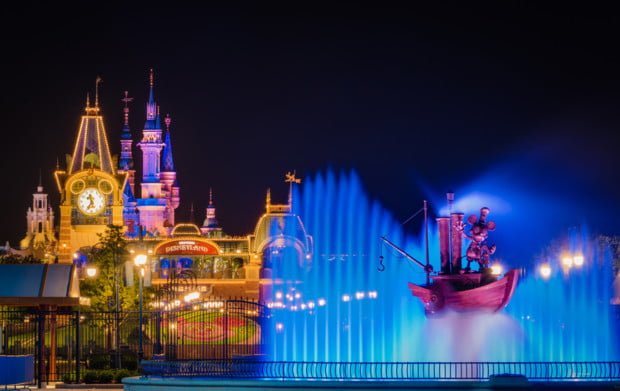

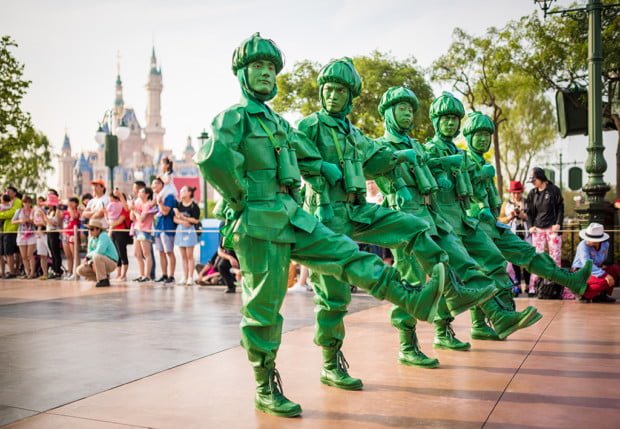
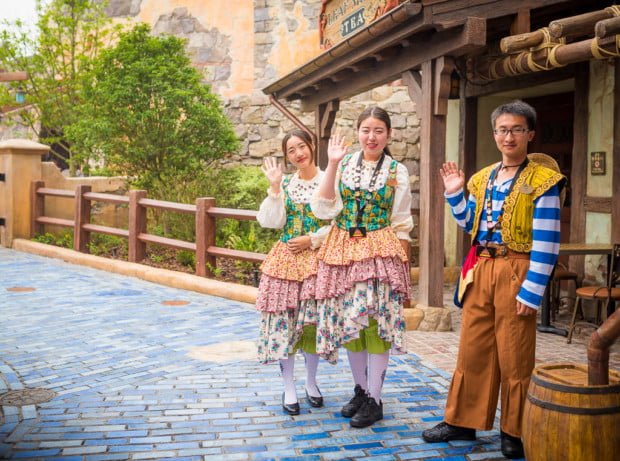
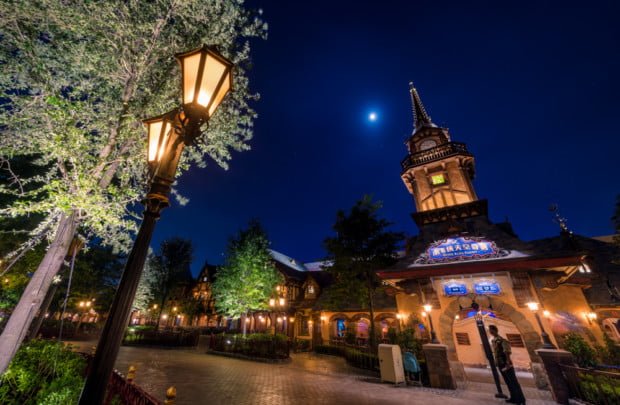
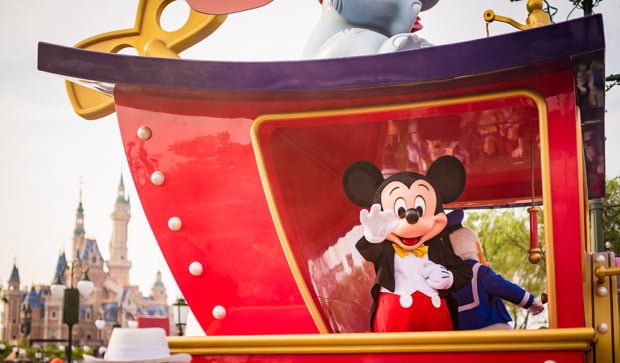
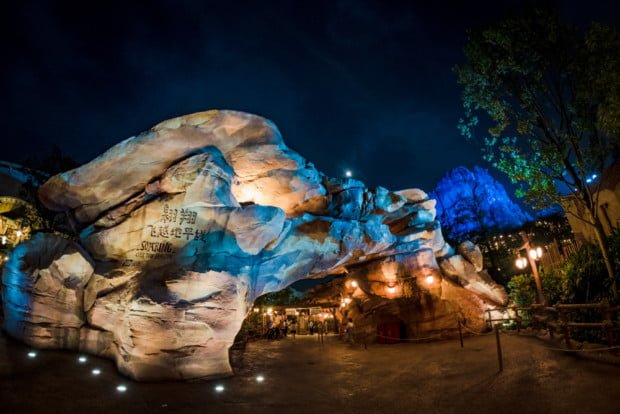
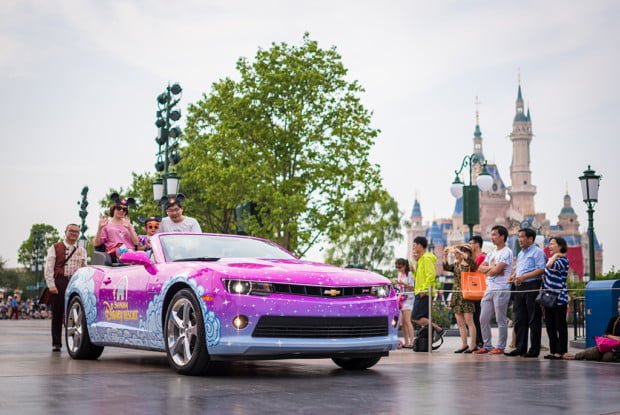
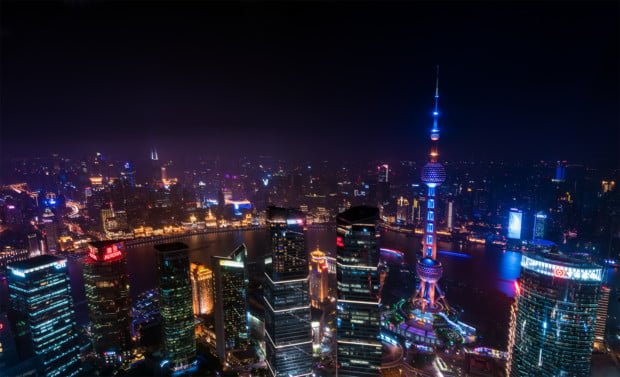
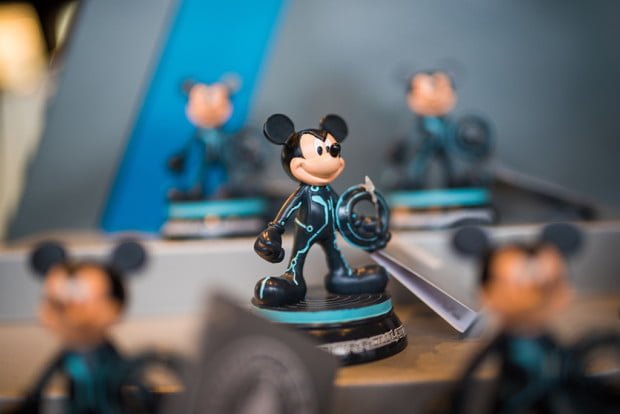
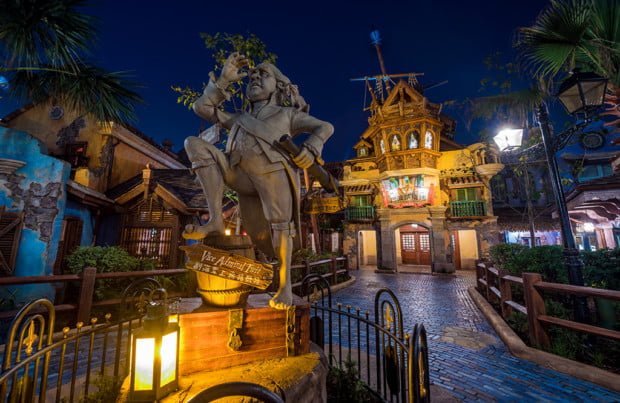

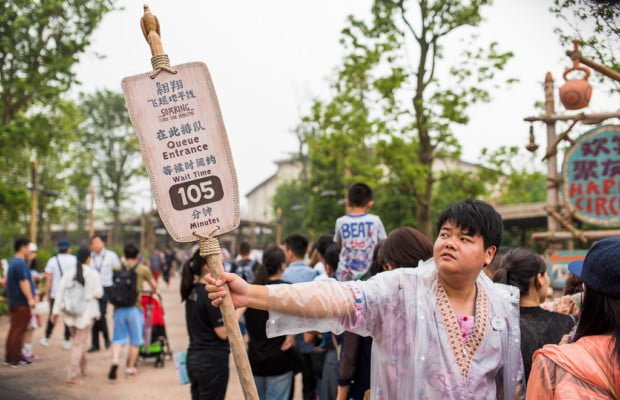
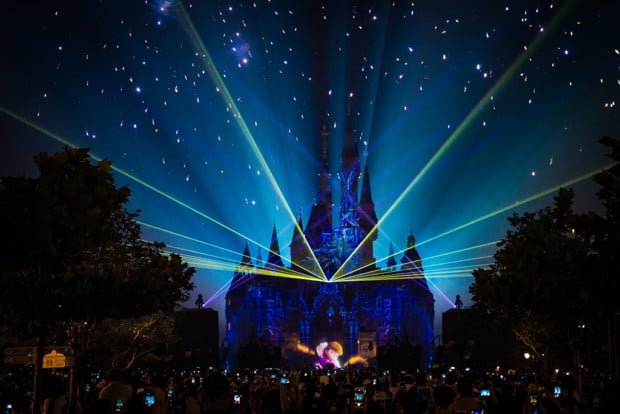
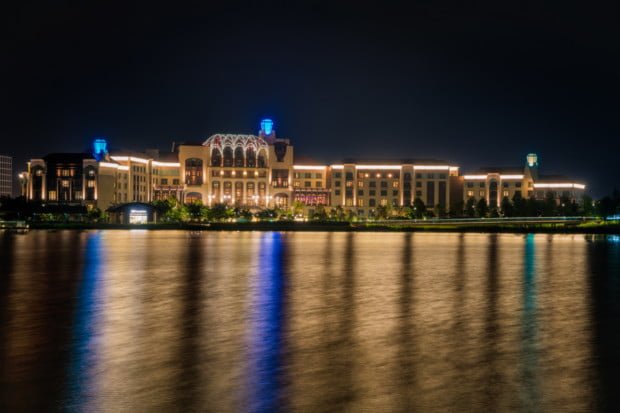
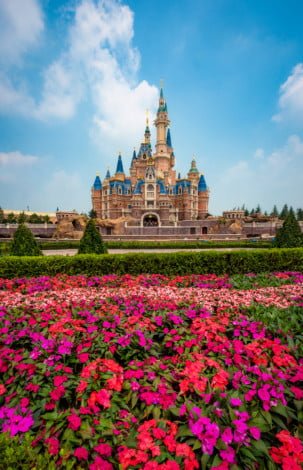
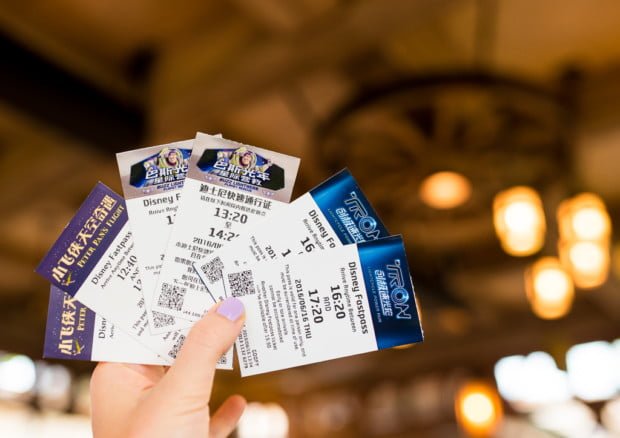
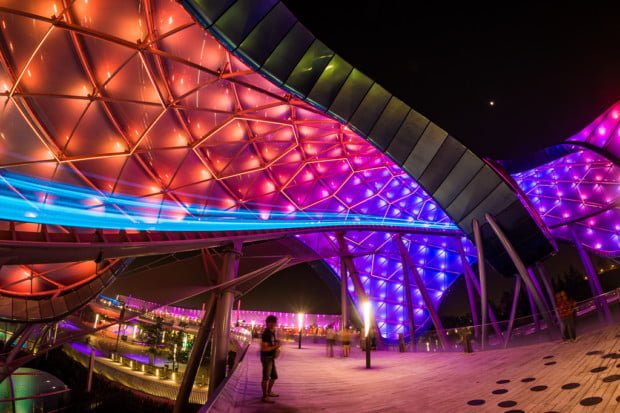
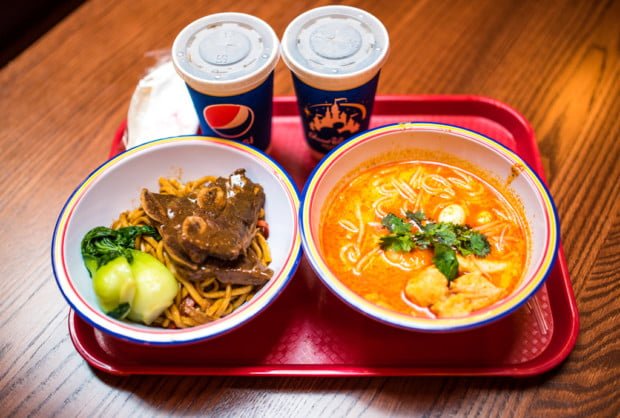
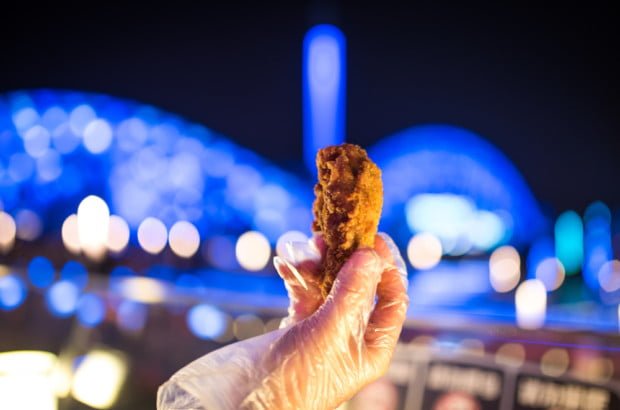
Hi Tom, thanks for the information. I am planning to visit SDL in June (no choice as to dates) and was wondering if you have had occasion to update this review?
Thanks again!
I second that motion! It’s a nightmare planning my June trip due to lack of updated information out there. Thank you, Tom and Sarah!
We’re planning a SDL trip in June too. Things I’ve learned so far in my research:
SDL Hotel bookings can be made at least 6 months in advance but park tickets only released 30 days in advance.
Park tickets and entry are guaranteed for SDL resort hotel guests so can be purchased from hotel concierge 1 day before your planned visit (For example, check in on Thursday and buying ticket for a Friday park visit). If buying park tickets directly from your SDL hotel, you receive one free premier access pass (fastpass) per guest per day. SDLR hotel guests receive up to one hour early entry and use of a hotel guest entrance into SDL located in Disneytown.
When entering your name into the reservation system on SDL website, you can only list your first and last name but not a middle name. After you receive your hotel confirmation, you’ll need to e-mail SDL with your full legal name (name listed on passport) for all members of your traveling party including children. The hotel will send you a confirmation letter with all the legal names listed on the hotel reservation. This letter is important to print out and show when entering China (especially if using 144 hr transit without visa-which we plan to do).
SDL website has a live chat function if you have questions or you can email them (link on SDL website) and get a response within a few days.
I hope this helps!
Hi,
This sounds like such a great trip and I just love your little collections of mementos! I’m heading to Paris for the first time later in the fall and would love a travel guide – especially on places to eat!виза за Канада онлайн
If you plan on eating in DLP resort I suggest you book ahead. Otherwise the quick dining is poor. We had a good meal at Walt’s (DLP) and fun at PYMs kitchen (DHS) which was well themed. Billy Bob’s buffet at Disney village (no need for park entry) is also pretty good. Avoid walk up counter service at Hollywood studios. Bakeries at DLP are generally OK. Long waits in peak hours and a bit pricy.
Thank you for sharing this excellent information. Your blog is really cool. It was truly user friendly experience.
Hi Tom, first of all, thanks for writing a fun and informative article. It’s a very interesting read. I’m wondering if you mind getting inputs on the time of year to travel to SHDL and its seasonal events? I’m re-reading the article and the section on when is the preferred time and Christmas is a little off…I don’t want to come off as rude or trying to teach you how to tour Shanghai Disney…
Your guild on HKDL and Tokyo helped so much with my planning. So I just thought the Shanghai one can be touched up a little. I have a diamond AP for SHDL and visits all the time. Anyway thanks again, your website has been a great delight for me.
That knock on American infrastructure was pretty uncalled for considering you’re praising a literal dictatorship. But I guess its okay to praise communist china while also insulting “entitled Americans” because china has better trains.
As a ‘historical’ note, this guide was written 4 years ago at a time when a lot of the Shanghai Disneyland coverage revolved around anecdotal reports of kids pooping in lines and people trying to draw a line from that to “the park is gross.” (Hence the tone of the ‘Cultural Etiquette’ section.)
Nowhere do we praise the CCP. The last several years have made abundantly clear how awful the Chinese regime is for a multitude of reasons, and it’s heartbreaking to see what’s happening in Hong Kong. The next time this article receives an update–whenever international travel is allowed to China again–we will be including warnings against Americans traveling to China.
It’s also true that our infrastructure is pretty bad (compared to almost all of Europe and Asia, not just China) and American guests are the US parks are often entitled. Multiple things can be true at once.
After the COVID-19(Coronavirus Disease 2019) is over, I am going to Shanghai Disneyland with my family for two days.
Very nice post, this article is very informative for shanghai travel lovers.
Hello! Long time reader, first time comment-er
I am heading to Shanghai for work and of COURSE will be making a stop at Shanghai Disney before I head back to the states. Not sure how old this article is, or when it was last updated, but you had mentioned how contactless isn’t a big thing there. When I was in the city of Shanghai, a year a go, WeChat was HUGE and you could pay everything contactless through it. Is Shanghai Disney just not caught up to that trend like the rest of Shanghai?
Thanks,
Katie
Just FYI, your Klook coupon code doesn’t seem to work anymore!
Currently in Shanghai doing a crazy park run from the US doing Shanghai Disneyland and also Hong Kong Disneyland (doing Tokyo in a separate trip in a couple of months). Just wanted to give another hotel option if you wanted to save some $$ compared to the onsite offerings. The Shanghai Marriott Hotel Kangqiao is a newish hotel a couple of miles from the park that has a free shuttle service Shanghai Disneyland. $100 USD per night for one of the nicer Marriotts out there. Granted…..i wouldn’t stay here if my main goal was to be close to Shanghai proper but if Disneyland is your focus or you have business in the area it is a great choice
Just visited this amazing park and I’d like to share that late October was perfect for my visit. No crowds at all – TRON and Pirates had a 10 to 20 minutes wait on Saturday and Sunday. Since tickets for weekends cost more than tickets for weekdays, I believe that Mondays now may have the worst crowds. Soaring has the worst wait times (it hit 75 minutes on both days), just like Seven Dwarfs Mine Train (45 to 60 minutes) and Roaring Rapids (30 to 40 minutes). But get a Fastpass (using the app) for any of these attractions as soon as you arrive (early) in the park and you’ll be OK. I visited on October 27 and 28, after the National Holidays (first week of October) and when most kids were studying for exams. So it was a pleasant experience.
I studied abroad in Shanghai during the Fall of 2016 and went to Shanghai Disney with my mom when she visited during some of my last days there in late November. The weather was chilly, but not at all unbearable with light jackets. We stayed in the Toy Story Hotel and loved it. Our first night there we could see the fireworks show from our room–they even had a channel on the TV to listen to the show’s audio alongside the fireworks (I don’t know if this is common or not). The Cast Members there are incredibly helpful and most spoke English.
Note that this was within months of Opening Day, but it was not crowded at all. We noticed that the rides that allowed for guests to take selfies on the ride (Dumbo, jet packs, etc) were far more crowded than the ones we thought would have long lines (Tron, Pirates of the Carribean, the Star Wars area, etc). The shows were all amazing and I echo what another commenter said: the Tarzan show is BREATHTAKING. We loved it so much we saw it twice. We spent two days there in total and thought that was the perfect amount of time to see / do everything we wanted.
One final note: I would avoid going to Shanghai Disney — or all of China for that matter — during their National Holiday during the first week of October. That is when the cities are the most crowded along with during the New Year. If you do spend any amount of time in Shanghai besides the park, I suggest going to Yu Yuan garden! Happy travelling.
Planning a trip the first weekend of October. My husband, who now lives in Hangzhou south of Shanghai, says it’s a Chinese Festival Holiday. He wants to go that weekend due to jet lag of our return trip there. Does anyone know what the crowd is like for such a holiday? After reading some comments, I’m thinking I’d rather go the weekend before and deal with pushing thru tiredness. He’s been to the area several times and knows how to navigate so that won’t add to our trip. Thanks!
Planning a trip there soon! Questions for those who have visited from another country: I keep reading about the challenges of getting a legit taxi at the airport vs. the rip-off services that try to get you to go with them. How hard is it for a foreigner to identify the “legit” taxis at the airport? And if this is such a challenge, why not take the train into the resort? Quite honestly we are heavily leaning toward taking the train and avoiding the entire taxi “experience” that everyone seems to have there. But I’ve not seen many who chose the train and I’m wondering why….
Hi, did you take he train in the end or taxi? What were your experiences. Thank
Following up, two years later….
We couldn’t see that the train system was going to be an easy option, as there was no direct train service from the Airport to Disney. We would have had to make at least one or two transfers, and we weren’t comfortable doing this in Shanghai, a city (and country) we’d never visited before.
So we opted for the taxi service. It’s true what they say – the minute you get your luggage you will be approached by dozens of people trying to get you to take one of their very expensive car services. We ignored all of these people, and that wasn’t the easiest thing to do with them constantly in your face about their “taxis”.
It was easy to find the real taxi area, as there were plenty of signs, and it was similar to many airports with a long line of cabs and airport personnel directing travelers to the nearest available cab. So, getting a taxi was not an issue.
Getting to the hotel, however…..
We gave the taxi driver the address of our hotel – a Marriott property near the Disney Resort. At the onset, he seemed to understand, but that quickly ended up not being the case. From there, it was at least 30 minutes worth of wrong turns, backtracking, etc. before we finally arrived at the hotel.
We learned quickly that Google Maps does not line up correctly with your actual GPS location in China, and therefore as a US traveler you often think you are in the wrong place. For example, when in the Disney park itself, Google Maps shows you in a random neighborhood several miles away. You can see the image of Disney on your phone, but it doesn’t appear as if you are there. This issue obviously did not help us when trying to direct our driver to our hotel. We probably just made it worse.
Long story short, we made it to the hotel, which we knew had a free shuttle to and from the Disney Resort every hour. And, we learned, they also ran their shuttle to and from the Airport!!!!!! Talk about things we wish we would have known in advance…
Other than this, our trip was FANTASTIC. The Disney Resort far exceeded our expectations, and the cities of Shanghai and Beijing were amazing to visit. Hopefully someday we can return.
My husband lived in Hangzhou 2018 2019. I was Ofer there and went to Shanghai and Tokyo Disney as was our kids and bf’s. We took the train from airport to Disney when all of the kids (20’s) came over. It is easy to do really. There are signs above the trains showing each stop. You just have to know each time to what stop (in number). It is also inside the train above all the doors. It lights up which stop you are at. When transferring, same thing. My husband ran to one beeping to close doors. I didn’t get in. Well my arm did until I ripped it out I knew where I was going and go to the nest transfer. GPS worked fine for us as well. We used in for walking shanghai. I do know personal drivers there who are the best if ever needed. One drove us to Disney the first time. They are hired by my husband’s old company.
We just got back from a trip to Shanghai Disney last week (June 26 & 27). We had a great time & I thought I’d add our 2 cents about the experience.
1. We did the 144hr visa free transit! It can be done, but when we checked in we were told “cannot” at the airport. We were traveling with Air Asia – a manager eventually called the airline office in Shanghai and confirmed that our travel plan was ok. Our itenerary was Chiang-mai –> Bangkok –>Shanghai –> Kuala Lumpor –>Shanghai. This took some time and some unnecessary stress but worked out ok.
2. Week days in the summer are still very crowded! We stayed in the ToyStory Hotel and were able to secure a fastpass for the River ride. We thought if we got to the park early using the special entrance for hotel guests we would be able to ride that or soaring first thing while the line was short. The line was already 180min when we arrived at the queue 10 min before the ‘official opening time’. Be prepared to wait. For our family no ride is worth over an hour wait. (If you only have one day and must do all the big rides -soaring, river rapids, mine train, & tron. You will prob need to purchase a fastpass. I’m frugal and we didn’t want to spend the extra money on it. We never did ride Soaring but have been on it before, so my kids were OK with that. But we did have time for all the other big rides, and some of the classics. Since I was there with teens, they opted out of attractions geared toward younger kids. We also skipped the character meet-n-greets.
3. You will walk a LOT!! I think we put in close to 20,000 steps each day.
4. It was HOT (feels like temps were around 110 F). Bring your hat, sunglasses, sunscreen and umbrella for shade. My kids teased me for being an Asian mom and then asked to walk with me when I had the umbrella up.
5. Everything in Shanghai took longer than we thought it would from getting our visas at the airport, to checking in at the hotel, to transport to Disney. Give yourself a 15-30 minute travel cushion. Oh, bring along extra patience. There are alot of people and personal space isn’t really a value.
6. We found the food and snacking game to be a bit lacking. Granted we were usually looking for Western Food. We didn’t go hungry, but I should have packed some snacks. (I usually do but listened to my hubs who said don’t bother since we were traveling with only carry ons.) There are plenty of places to refill your water bottle in the park. It won’t be cold, but its free, and did I mention it was hot.
7. We had a really great time and made a lot of memories! Tron is awesome!! We also loved the Pirates ride. Because it was so hot we made scheduled stops for the shows (in the AC during the afternoons.) We ended up enjoying them even though they were in Chinese. We especially loved Tarzan – the acrobatics were amazing.
Stacy – would love to talk with you more and ask specific questions. We are planning to go for our son’s senior trip but as Westerners, we feel inadequately prepared and the whole thing kind of overwhelms us. Wish I had a way to contact you so I could ask some travel specific questions!!!
Hi Susan,
I was there in November 2017 for a day. I am planning to bring my daughter for a post HS graduation trip in June 2019 and am planning that now – we’re doing a whirlwind trip to Tokyo, Kyoto, Hong Kong and Shanghai in about 2 weeks due to her schedule. November was my first time to China (Hong Kong and Shanghai) and I did it as a solo leisure traveler but I’ve traveled generally to Asia several times for work and often solo so I’m a fairly intrepid traveler.
If you are on Disboards, you can PM me at AinW – I check it every couple of weeks and would be happy to answer general questions about short trips to Shanghai &/or Hong Kong.
Happy planning 🙂
I think one of the interesting elements of the Asia parks is that each has a slightly different appeal in regard to age demographics. We lived in Hong Kong, and I went to Honk Kong Disney more often than I want to admit to. I went often enough to write an app. For my money, Hong Kong is probably the best Disney park worldwide for the toddler set. The park is small and most of the rides are aimed at younger kids. There is Grizzly Gulch and Space Mountain, but most are really for the toddler and preschool set. We spent 7+ days in Disney Shanghai, and I personally liked it a lot more than Tokyo Disney. The Shanghai attractions are newer and some, like Pirates of the Carribean, are actually quite breathtaking. The Tokyo attractions feel quite dated by comparison. I should also point out that we had a fairly serious emergency at Tokyo because the park didn’t have an epi pen on hand in their medical center. On top of that, no one at the medical center spoke English. So be aware.
I’d like to point out that your ‘Dudley-Do Right’ reference is offensive and outright incorrect. The ‘Air Canada’ agents in Orlando are in fact, Americans.
Does Shanghai Disney provide luggage lockers as we plan to go to Disney on our last day so after Disney straight to airport.
Yes, there are luggage lockers (I was there in November 2017 and had to leave my luggage). I took the Metro and was there about an hour before park opening (and had not pre-purchased a park ticket). Unlike Hong Kong (where luggage check is between the Metro stop and park entrance), in Shanghai you do it at Guest Relations AFTER you pass through security. I waited in the first queue (to go through security) THEN entered a different queue to purchase my park ticket THEN headed to the right to Guest Relations and baggage check. They gave me a claim ticket (sorry – I don’t remember how much; I think about the equivalent of $5). A full-sized carry-on wheeled bag was not a problem to check.
Great Guide! We are planning to visit in this summer in June. I’m wondering if/how your touring plan will change now that ToyStory Land is open.
Thanks for the great blog. We just got back from Shanghai Tuesday–literally were in Shanghai Disneyland on Monday 11/27. We got super lucky–Monday was the first day of the Enchanted Holidays at Shanghai Disney Resort . When we got to the park we could hear Christmas music playing and the resort had “light” Christmas decorations. We were able to go to the Christmas tree lighting ceremony as well. It was a lot of fun to experience a bit of Christmas in Shanghai.
We were there on a Monday–crowds were very light. We were able to do almost all the rides we wanted to. The longest wait line we saw was a 120 at Soaring–the longest we waited in was 30 minutes. They also recently updated the App to allow you to get Fastpasses in the app. I was able to scan everyone in our parties park tickets and we were able to get fast passes through the app all at once. This was super convenient. They also offered several options to buy fast passes–you could buy a single fast pass for about $8 US, or you could buy all the fast passes for $40. So I can see how they are going to monetize this. I am also interested if the pricing is dynamic–maybe it was fairly low since it was a slow day when we were there. We had fast passes for Seven Dwarfs Mine Train. When we got there the ride was closed for maintenance- when we checked the app they had already changed our fast passes to non expiring fast passes that could be used on any ride.
The weather was great in November–the day was very pleasant-although it did get a bit chilly at night. The food in the park was not my favorite. We did eat at Barbossas Bounty and it was just ok. The park closed at 8–so right at closing we went to Ippudo in Disneytown for Ramen–it was delicious and not overpriced. I was surprised how easy it was to get to Disneytown–if we go again in the future I can see us eating most of our meals there. The restaurants looked much better and with a Disneytown entrance it was just a short walk.
Overall we loved Shanghai Disneyland–it wasn’t quite the Christmas we are used to at Disneyland–but it was a great experience.
Hello
Can i bring pack food inside the park?is there any halal restaurant inside?